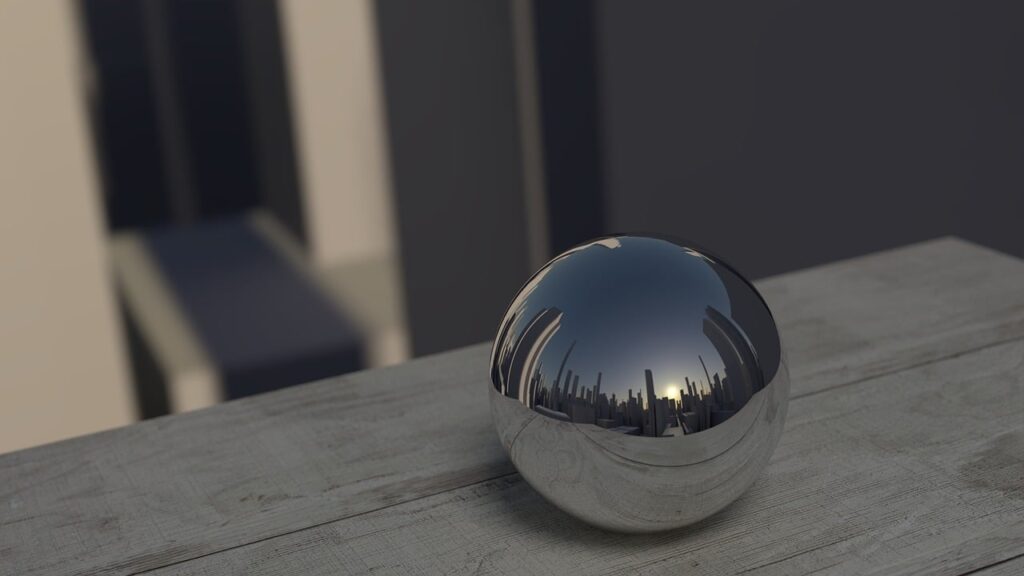
How would an individual material change the world with its unparalleled strength, elasticity and versatility? The answer lies in the liquidmetal technologies amorphous developed by liquidmetal technologies amorphous and liquid amorphous metals. These materials expand opportunities in fields that were previously thought to be out of reach.
These metals allow, for example, the creation of smartphones and medical implants, advanced aerospace liquidmetal technologies amorphous and much more. But how exactly do they enable these revolutions? What is the mechanism of action? And what is the outlook? In this article, we will address these questions and examine the future of amorphous metals manufactured by Liquid Technologies.
How Amorphous Alloys are Made
The body of knowledge associated with amorphous alloys is based on their internal structure which is totally different from all known structural metals. Amorphous alloys do not have a uniform atomistic structure as do classical crystalline metals. Their atoms have no such invariability and are in a rather chaotic, non-crystalline arrangement. This can be compared in analogy to the structure of atoms in glass. This internal matrix is formed through a certain strengthening method – a rapid cooling of molten metal avoids the possibility of atoms bonding and forming a crystalline structure.
The phenomena of poor crystallinity is what causes amorphous alloys to be especially strong. They are incredibly strong because all of the weak points that are found within defective crystalline structures, like grain boundaries, are absent. They are also far more elastic and corrosion resistant than standard metals, which makes them perfect for harsh environments. Their natural toughness and inherent resistance to wear and fatigue allow the use of those materials in components subjected to extremes for a great deal longer time.
Exploiting this totally new approach in material science, liquidmetal technologies amorphous has been able to design products that perform beyond traditional materials and create products with unique features.
What Are Amorphous Metals?

Amorphous metals are also known as metallic glasses and have nothing in common with traditional metals. Contrary to steel or aluminum, which have a clear crystalline molecular structure, amorphous metals have their atoms structured in a scattered or non-order manner. This feature makes them unique as they are stronger, elastic, and more corrosion resistant.
Characteristics of Amorphous Metals:
Non-Crystalline Structure: The lack of the internal grain structures found in conventional metals helps them avoid areas of weakness and fractures.
Exceptional Strength: Amorphous metals are identified to be more robust when compared with the other traditional alloys such that their wear and tear is virtually none.
High Corrosion Resistance: Their structure is strong enough so that no chemical reaction occurs with the environment and this precludes rust and disintegration even in unfriendly conditions.
Elasticity: Amorphous metals in a unique way possess the ability to absorb and distribute stress in order to bend without undergoing permanent deformation.
As opposed to the conventional alloys, the amorphous metal, hydroxylapatite is lighter, possessing much greater strength and more than three times greater environmental resistance to water and chemicals. This makes them worthy candidates for all potentially demanding applications over the broad spectrum of industries.
The Role of Liquidmetal Technologies Amorphous
liquidmetal technologies amorphous developed its maturity in the market being the first to invest in the development of amorphous alloys. The company was founded first in 2003 in the United States, many regard it as the front runner in this niche area. Years of research, numerous patents, and revolutionary applications allow liquidmetal technologies amorphous conquer the market and reshape the understanding of high-performance materials in quite a few industries.
Key Achievements:
Patented Technologies: Many advanced amorphous alloy compositions and some specific liquidmetal technologies amorphous of the alloys production have been patented and liquidmetal technologies amorphous is an owner of the IP rights to the compositions.
Industry Collaboration: They integrate with aerospace, medical, electronics, and automotive industries to improve the standards of the products.
Precision Manufacturing: Their proprietary injection molding strategies offer the possibility to manufacture parts of advanced design with tolerances close to unity due to nearly ideal accuracy in component manufacture.
From medical implants that have strict requirements regarding precision and biocompatibility to consumer electronics that are appealing and sturdy,liquidmetal technologies amorphous has firmly established itself as an active innovator in this field.
Amorphous Alloys’ Special Properties
In what way can amorphous alloys be able to stand out from other conventional materials? The properties which they possess allow them to solve the majority of engineering issues as ‘no one else’ tools.
1. Mechanical Properties

When subjected to stress, amorphous alloys do not crack. They offer unmatched sturdiness and are useful in situations where other metals would typically fail. Time and time again, these materials prove to be reliable whether it is for repetitive mechanical cycles or for tremendous shock.
2. Oxidation Resistance
Even under severe conditions that would cause steel to oxidize or corrode, amorphous metals do not corrode because they are resistant to oxidation.
3. Ductility
The capacity to withstand stress without being altered makes amorphous alloys useful in dynamic applications like wearables and shock absorbers since they can absorb and distribute stress.
4. Complex Shapes Creation Ability
Complex shaped parts can be produced using injected liquidmetal technologies amorphous alloys which do not require extensive machining. Dissimilar to previous models, this allows manufacturers to offer more complex designs while reducing manufacturing costs.
Applications of liquidmetal technologies amorphous Alloys Here lies their effectiveness: 1. From a portable smartphone casing to wearables, liquidmetal technologies amorphous alloys are high in strength, light in weight, are scratch resistant and possess great structural integrity. One also needs to factor in how effective magnetic molding is, which also allows for many functional and appealing structural designs. 2. Surgical instruments and sytems, for example, implants must have biocompatibility as well as a degree of precision. Sourcing materials free of these flaws can be easy, as in the case of amorphous alloys that are integrated with other superior qualities like corrosion resistance and also other abilities of being intricately molded. For example, joints implants made from amorphous metals have been shown to last longer and function better with the human body. 3. Backed with the previous statement, it requires no emphasis that amorphous alloys can be used in aerospace as it is an advanced industry. Because of their attributes, they are able to support the complex components that withstand high pressure and other extreme attributes but reducing the weight of the component and retaining the strength of the part. 4. Another industry liquid metal alloys can efficiently serve would be the manufacturing and construction sectors. These metals can improve efficiencies by replacing other industrial uses from construction tools to robotics and wear and cut resistant gears, so to say, Liquidmetal alloys make things really easy. 5. In the case where aluminum was used to make the shells that housed electronics, the electronics are cumbersome and difficult to work with; thus, amorphous alloys can be used as a replacement for conventional materials, so much so, conventional materials should be put into question.
Cost SavingsChasing a liable profitability, producers are able to dramatically cut down on expenses and time by using rigid molds, which render expensive secondary machining techniques useless and aggravating.Cost SavingsChasing a liable profitability, producers are able to dramatically cut down on expenses and time by using rigid molds, which render expensive secondary machining techniques useless and aggravating.SustainabilityGlobal sustainability goals are becoming more important to contemporary societies. There is no need for material wastage during the construction of these alloys, which offers additional advantage in terms of eco-friendly manufacturing paradigm.While the potential of amorphous metals is certainly vast mach more potential and possibilities, uniqueness and challenges do restrict mass adoption of the amorphous metal alloys.Types of Amorplouse Metal AlloysLiquid MetalThe current materials and production expenses of amorphous alloys are extremely high, especially in comparison to traditional metals, making these soy materials difficult for widespread acceptance. As mentioned earlier, these alloys are possible but scaleible possibilities have not financially been developed.Limited liquidmetal technologies amorphous has established about scaling ally. Therefore, Liquid metals and molten metals are more than just a drop-in replacements for conventional metals.liquidmetal technologies amorphous are where the enabling technology of the future right now.liquidmetal technologies amorphous has been reluctant to expand given the temperamental ecosystem that surrounds the Liquid Metal technologies. Nevertheless, these advances are anticipated to enable numerous new applications for liquidmetal technologies amorphous alloys and broaden the scope of existing ones. Emerging Trends: 3D printing integration. The integration of additive manufacturing and the amorphous alloys is the future of unlimited possibilities for customized designs.
Renewable Energy The industries of wind turbines, solar, and electric vehicles can utilize and benefit from these materials as they are light weight and strong. Biotechnology From implants to wearable tech, amorphous metals will keep enhancing healthcare and personal medical purposes.
Material science specialists as well as specialists from various industries may in the years ahead accelerate the pace of adoption and innovation. The Role of Innovation in Expanding the Market In order to cope with the challenges presented by the amorphous alloys, development of the materials is ensured by innovation. liquidmetal technologies amorphous is already laying down good practices by investing time in advanced manufacturing processes and joint ventures. The company can also lead the wholesale adoption of amorphous alloys in various industries by reducing costs through increasing productivity and increasing the cost of raw materials.
Collaboration and Partnerships Liquidmetal’s strategy includes working with foreign companies and scientific institutions. They allow practice, which contributes to the achievement of success in the research of technologies, materials or application of the developed alloys. For instance, cooperation with engineers of aerospace industry or researchers provides opportunities for further tailoring of the alloys to specific market needs.
Customization Opportunities

The provision of preparing materials to various specifications is yet another encouraging development in the manufacture of materials. Due to the advancements in alloy composition and precision molding processes the customers can now request specific performance features that would suit the intended application. This versatility increases the scope of the adhesiveness of amorphous alloys to smaller, specialized areas which include engineering and luxury products.
Sustainability and Environmental Impact
The growing trend towards sustainability offers yet more pathways for the development of amorphous alloys. Environmental considerations of these materials, especially the waste reduction in their manufacture and their ability to be recycled, are in tune with contemporary practice. Such industries, which include renewable energy and electric vehicles, which with the assistance of green technology seek to minimize emissions are now more of exploring the capabilities of amorphous metals in improving efficiency while reducing adverse effects to the environment.
Circular Economy Benefits
Due to their ability to be recycled aswidely, amorphous alloys advance a circular economy which reduces the throwaway culture of materials, instead promoting the use of existing materials in making new products. Should this quality become standard, amortization of metals can be integrated into responsible manufacturing systems to help reduce reliance on dwindling supplies.
Why Amorphous Alloys Matter
The establishment of the liquidmetal technologies amorphous and their amorphous alloys are likely to penetrate various industries and determine the materials of the future. From addressing real life problems within the aerospace sector to developing more durable and environmental-friendly products for consumers, their extensive adaptability tells of its future potential.
What if someone said it was possible to know the future – the future of material science? All credits go to liquidmetal technologies amorphous and their remarkable developments with the alloys of the future, and be ready, they are bound to knock on your world sooner than you think.
Conclusion
Understanding the relevance of the liquidmetal technologies amorphous developed by liquidmetal technologies amorphousand their amorphous alloys, it is impossible to disregard the revolution they have brought about. Most of these alloys have exceptional strength and corrosion resistance, making it easier to mold precision parts which, in turn, opens up vast territory in such areas as aerospace, medicine, consumer electronics, and many others. There is something about amorphous materials which metals have traditionally lacked thus making today’s theoretical design possible.
There are, however, other issues such as cost and scalability that are yet to be resolved. Nonetheless, technological and manufacturing advancements that are being developed each day bring such developments closer. liquidmetal technologies amorphous is playing a critical role in this change; they are set to transform how the world sees and utilizes metals – bringing an era of amorphous metals.
FAQs
What are the applications for amorphous alloys?
Amorphous alloys are application specific materials found in consumer electronics, medical applications, aerospace applications as well as industrial tools.
Are amorphous metals eco friendly?
Definitely yes. The processes involved in making the amorphous metals produce lesser waste thus making them more eco efficient as compared to conventional metals.
What factors contribute to the superior strength of Liquidmetal alloys?
Liquidmetal’s unique atomic framework is such that it contains no such grain boundaries which normally are found in crystalline structures, enabling them remarkable absolute strength and high toughness.





